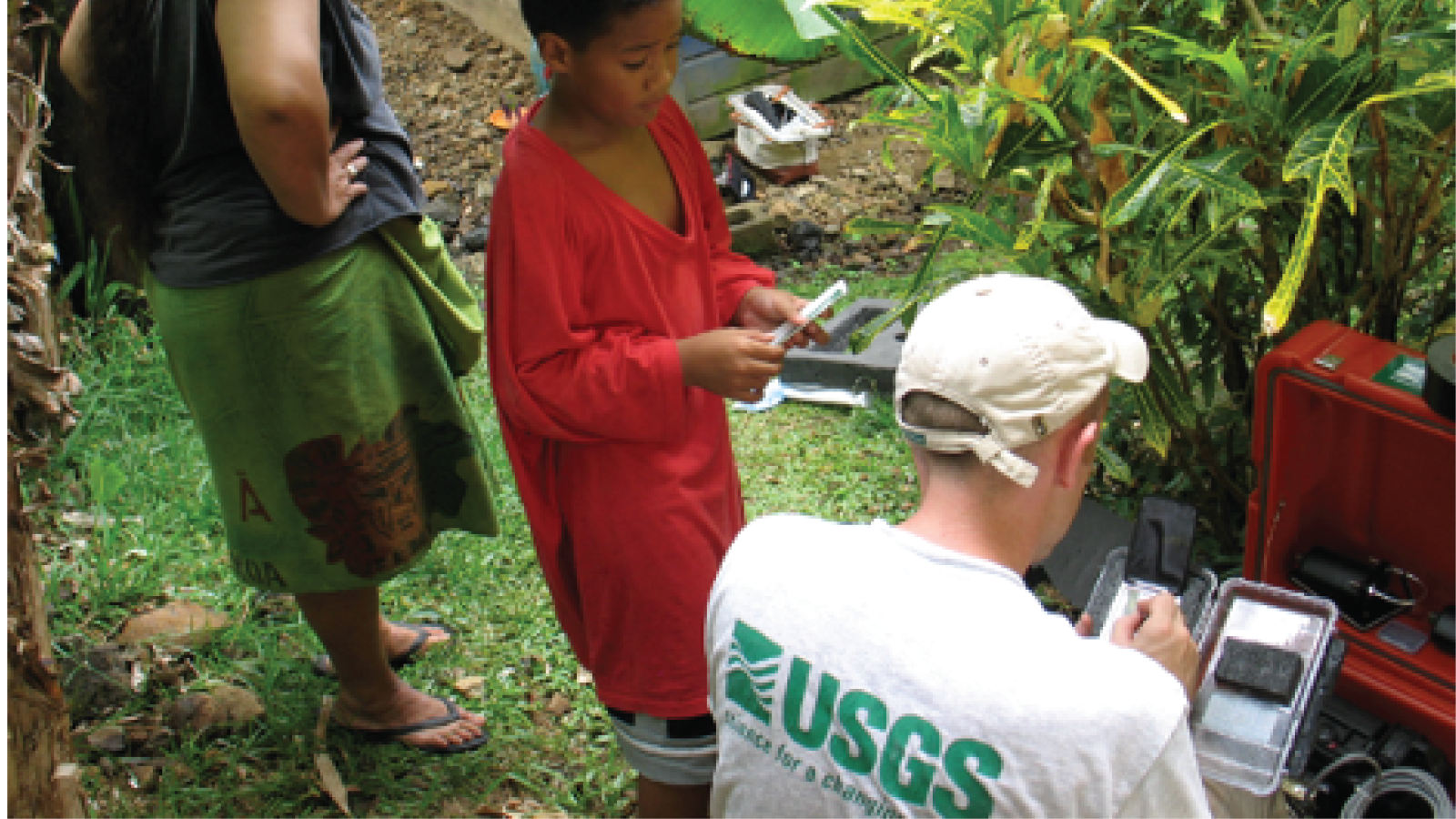Jeff Fox earned his BS in Geology from SES in 2004 and went on to earn an MS from the Colorado School of Mines. Jeff now works as a seismologist for the Ohio Geological Survey.
Contact: jeff.fox@dnr.state.oh.us
"The [SES] field-camp courses are among the best in academia. Even though I have not done field mapping since, I recognize the benefit of all the work required of those courses as building a foundation for a lot of the work I did do in my career. I am still using those broad foundational skills learned at Ohio State to this day."
Where has your degree taken you?
After graduating from Ohio State, I attended graduate school at Colorado School of Mines and earned a Master’s degree there. I worked for the USGS at the National Earthquake Center for 10 years while living in CO and attending school. While at the USGS, I participated in the installation of the Intermountain West (IW) seismic network in Grand Teton National Park, as well as throughout Colorado, Wyoming and Montana. I participated and led seismic aftershock monitoring studies in Wells Nevada, Mineral Virginia and American Samoa in response to damaging earthquakes there.
After a few years of doing seismology work, my career shifted to the Geomagnetism group where I worked on instrumentation in measuring the Earth’s geomagnetic field from sites all over the world, from Puerto Rico to Alaska and Guam. Geomagnetism is a very unique and different discipline than seismology, but in some ways similar. It was exciting and refreshing to be exposed to such a niche science, and group, within the USGS. While there I got to attend the NOAA Space Weather School in Boulder, CO learning about how the sun affects the Earth’s magnetic field and all systems that operate within it.
I then decided to return to my home state of Ohio to take over management of the Ohio Seismic Network (OhioSeis) in order to strengthen and upgrade the network. I’d worked for OhioSeis as an intern back when I was an undergrad at Ohio State. Since 2014 we have installed major software upgrades, such as Earthworm, to obtain critical 24/7 real-time monitoring as well as upgrading the seismometers to modern 3-component broadband instruments. Ohio now has a complete and modern real-time seismic network producing research quality data and making it available at the IRIS Data Management Center (DMC) in Seattle. We have pushed our earthquake detection threshold capabilities down to less than a 2.0 magnitude and can locate earthquakes anywhere in the state within minutes, any time of day.
While not a hotbed of seismic activity, Ohio does experience several earthquakes each year. We have a lot to learn about the state’s seismicity and underlying tectonic structure, and the seismic network helps facilitate that. It is also exciting to be back in seismology and in the field installing seismic stations across the state.
Finally, my career or path has come full circle. Recently I have been involved in the FanQuakes project at Ohio State. For the past two football seasons, with cooperation between the Geology Department at Ohio State, Miami University and the Geological Survey, we have instrumented Ohio Stadium with several seismometers to measure shaking during home football games. This has been a fun and unique opportunity for me to do field-based seismology, coupled with outreach and doing it in a fun way! It’s good to be back. OH…IO!
How do you feel your experience, specifically as an SES/geology student at OSU, prepared you for your career or life in general?
The geology program at The Ohio State University is very strong and in-depth. I felt the broad curriculum, dedicated faculty and demanding coursework prepared me well for my career. The field-camp courses are among the best in academia. Even though I have not done field mapping since, I recognize the benefit of all the work required of those courses as building a foundation for a lot of the work I did do in my career. I am still using those broad foundational skills learned at Ohio State to this day.
What is your favorite memory as a student?
I would have to say that all the actual field-geology I got to do as a student was the highlight of my experience. They say that the geologist that sees the most rocks wins. This is true I believe, and the opportunity provided by the department to head west to Utah for most of a summer was thrilling. I learned so much there and will not soon forget the experience, the friends and the mapping. Its one thing to teach it from a book, but to actually piece together complex geologic settings from nothing more than strike, dip and hand-sampling, was amazing and fruitful.
What advice do you have for current and future students?
My advice would be to inform future students to work hard and take a broad range of classes. Do not become too specialized in one area, unless you plan on teaching that specialization at the University level. I didn’t quite know what area of the geological sciences I would enter while I was a student at Ohio State. Initially I wanted to do marine geology, but ended up in seismology, where I’m quite happy! Talk to a lot of different professors, apply for internships with several different types of employers, ask questions and gain experience in other areas. For example, seismology is a very computer heavy science. I wish I had taken more classes in computer science and programming. Do not be afraid to challenge yourself in other areas.





